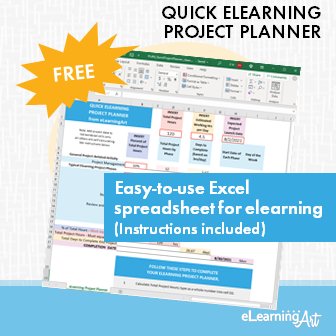
In 2017, elearning content creation will be on the rise. You can expect more interactive and user-friendly content and multiple learning modes that allow users to learn in the most convenient way for them. Mobile devices are another user-friendly trend. More than 70% of learners now access e-learning content via their mobile devices. Wearable devices and gamification are other trends.
Adaptivity
The ability to adapt in e-learning is a way to improve the effectiveness of educational programs. It is about providing learners with a learning experience that is tailored to meet their specific learning styles and learning goals. It can be used in online learning programs or face-to-face learning environments. Adaptive learning is especially useful when it is combined with other learning formats. It helps learners avoid being overwhelmed by information they don't need. It can also make learners feel like the time spent learning is worth it.
Three components make up adaptive learning: the model of learning outcomes, learner's background and personalized instruction. E-learning research has been increasingly focusing on this approach over the last few decades, and it is expected that its impact on learning will continue to grow.
Gamification
Gamification, or the use of game concepts in e learning, promotes active learning. It provides opportunities for learners to interact with the content, and gives them instant feedback. This encourages them to improve their scores and move on to the next level. It promotes continued learning and retention. Lessons are easier to learn online and learners are more inclined to return to the same module to improve their scores.

Gamification is being used by some companies to improve employee engagement and productivity. FreshDesk is a cloud-based help desk management platform that uses gamification to increase productivity. FreshDesk saw a 1,000% increase in revenue after implementing this method in 2012. This trend is in line to human-centered design. It helps modern workers succeed. Likewise, research has shown that empathetic managers are a vital factor in employee retention.
Self-paced
Learning materials at your own pace via e-learning tools that are self-paced can be done without the need for live virtual classrooms. This type of elearning is ideal for people who want to go over material multiple times. Some training content does not need to be reviewed more than one time. Live on-line training might be more appropriate if this is true.
Students who have multiple commitments and need to learn online at their own pace are especially benefited by self-paced courses. These courses can be completed in as little time as they want and can be monitored by a professor via the internet. Students can also ask questions online, which is particularly important for students who don't have the time or desire to attend live classes. Students who have full-time jobs and family responsibilities can benefit from self-paced courses.
Artificial intelligence
Artificial intelligence is a tool that can assist in many ways. From predicting the success of students in a course to identifying knowledge gaps, to predicting their aptitudes in future courses. Artificial intelligence can be used to organize courses and projects, as well as provide support and guidance for students. AI can be a great tool for e-learning.
Artificial intelligence can also improve the process of grading. For instance, if there are a lot of documents that need to be checked, integration of a solution can speed up the process. This will allow teachers to save time.

Microlearning
Microlearning is an e-learning method of teaching a subject in a short period of time. This type of course is great for busy people who cannot dedicate the time to studying entire courses. Microlearning can be delivered in a variety of formats, from short videos and infographics to leaderboards and badges. Microlearning can make even the most boring training sessions more enjoyable and memorable.
Micro-lessons are also available wherever and whenever you want. Micro-learning content can be compared to what you find on social media: it is bite-sized, multimedia-rich and similar to what you see on social media. A micro-learning session typically lasts three to seven minutes. Then, you move on and complete an activity. This method helps you learn faster and retain more information.
FAQ
What systems can be used in eLearning?
E-learning can be described as an online learning platform where students can learn via a computer monitor. You can engage in interactive activities, such as discussions, quizzes and tests.
E-learning includes also web-based programs, which give users the ability to access information online via a computer. This program is often referred to simply as "online educational."
Is eLearning effective for learning?
E-learning can be used to deliver learning content anywhere and anytime. It gives learners access to information from any location, at any time.
E-learning is also a way to provide training programs on demand, without having to travel and/or rent classroom space.
How do I pick the best eLearning platform for me?
There are thousands upon thousands of eLearning platform options today. Some are completely free, others more expensive.
You need to ask questions when deciding between these options.
-
Do I want to create my own learning materials? If so, then there are plenty of free tools available that allow you to create your own eLearning courses. These include Adobe Captivate (Articulate Storyline), Lectora (iSpring Suite), and Camtasia.
-
Do you offer ready-made courses in eLearning? Pre-packaged courses are available from a variety of companies. They can cost anywhere from $20 to 100 dollars per course. Mindjet (Edusoft), and Thinkful are three of the most highly-respected.
-
Can I have both? Many people find that combining their own materials and those of a company produces the best results.
-
Which option would be best for you? It all depends on your circumstances. If you are new at eLearning you may prefer to create your own material. However, once you have gained experience, you may want to consider purchasing a pre-designed course.
Statistics
- In the 2017 ATD research report Next-Generation E-Learning, 89% of those surveyed said that changes in e-learning require their staff to update or add new skills. (td.org)
- E-learning is intended to enhance individual-level performance, and therefore intend to use of e-learning should be predicted by a learner's preference for self-enhancement (Veiga, Floyd, & Dechant, 2001). (sciencedirect.com)
- According to ATD's 2021 State of the Industry report, technology-based learning methods, including e-learning, accounted for 80 percent of learning hours used in 2020. (td.org)
- India's PC market clocks 9.2% growth to 3.4 million units in the September quarter (economictimes.indiatimes.com)
External Links
How To
What technology should you use?
There are many options available depending on the device your learner uses.
-
Computer-based courses should only be offered on a computer.
-
It is possible to offer eLearning courses using mobile devices like smartphones or tablets.
-
It is possible to use both mobile devices and computers to deliver courses.
-
Some companies offer eLearning courses via DVD discs that can be viewed on any type of computer.
-
Web pages are the most popular way to present material online.
-
It is possible to have a combination solution where part of the course will be delivered via a web site and part through a CD/DVD.
-
Lastly, some companies offer free eLearning over the telephone. These can be recorded and re-recorded by the learner.